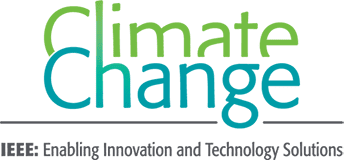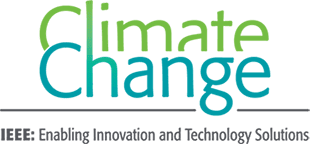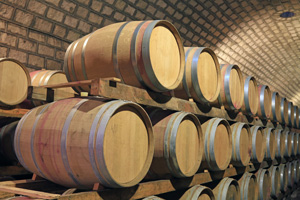The Perfect Blend: Engineering & Winemaking
Technology is playing a crucial role in improving winemaking, leading to more sustainable practices. What we learn in winemaking is transferable to other agricultural applications that can benefit the world’s populations.
NOTE: The views expressed here are solely those of the author and/or interview subject and do not represent positions of IEEE. Some references may require subscription to access content.
The University of California at Davis is at the forefront of blending agriculture and technology for a variety of agricultural applications, including winemaking. It is also the home to a vibrant IEEE student Chapter.
Opus One, a certified green winery in California’s Napa Valley, is committed to sustainable agriculture. Its commitment is strengthened by insights gained through collaboration with the UC Davis College of Engineering. Collaborating closely, the winery and the university have implemented many technologies such as sensors, control strategies, and data analytics to produce a wine among the most respected in the world. This collaboration has not only enhanced wine quality but also contributed to Opus One’s vision to be globally responsible through environmental, social, human, and economic sustainability.
Microbiology, biochemistry, chemical engineering, and environmental sciences, along with automation and control engineering, electrical engineering, and computer science, all work together to make agriculture more productive, reducing waste and energy consumption.
One area where technology has helped is in the fermentation process. Fermentation is widely utilized for various purposes, including the production of pharmaceuticals, biofuels, food and beverage processing, and soil health improvement. Critical pharmaceuticals including antibiotics, vaccines, and statins as well as common foods such as cheese, yogurt, soy products, sauerkraut, and kimchi are all produced through fermentation of bacterium. Wine and beer are some of the oldest fermented products, utilizing yeast to convert sugars to ethanol and carbon dioxide.
Carbon dioxide (CO2) is a natural byproduct in the fermentation process and is typically released into the atmosphere. The amount and rate in which CO2 is produced varies based on several factors, including juice chemistry, fermentation conditions, and the strains of yeast used. The variability in CO2 production across many concurrent fermentations make it a tricky byproduct to manage.
Recent innovations in carbon capture have helped manage the release of carbon dioxide, while repurposing it for other uses. Earthly Labs, a Carbon XPRIZE finalist, developed a carbon capture solution that includes hardware, software, and remote monitoring systems. Earthly Labs’ CiCi system captures the CO2 produced during fermentation and redirects it to other industries and uses, ultimately reducing atmospheric emissions. For example, in the case of beer production, carbon dioxide is both a byproduct of fermentation as well as a vital ingredient in creating frothy bubbles and avoiding oxidation, which makes beer go stale. Opus One began collaborating with Earthly Labs in 2022 to capture, purify, and liquify one of the wine industry’s most abundant emissions, CO2, with the goal of reusing the liquified gas in the winemaking process in the form of dry ice snow. Opus One assistant winemaker and viticulturist Kimberlee Marinelli says, “The dry ice is used to protect wine quality by creating an aerobic environment prior to inoculation, as well as during the wine’s post-fermentation, extended maceration stage. The innovation was particularly useful during periods when dry ice was difficult to find in the marketplace.”
There are trace VOCs (volatile organic compounds) and VOXs (volatile oxygenates) that are produced during the fermentation process that need to be removed to reach purity standards. To be used in food or beverage products for human consumption, the US Food and Drug Administration (FDA) requires CO2 to be 99.99% pure, known as beverage or food grade. Michael Silacci, Opus One winemaker, says, “It is still a costly endeavor to achieve beverage grade CO2 from a winemaking operation, and we did not wish to increase our carbon footprint by transporting CO2.”
Technology has also been deployed to manage the fermentation process within the winery. Students in the UC Davis Electrical Engineering program developed a wireless IoT (Internet of Things) sensor network deployed within the university’s research winery to monitor a variety of environmental parameters such as CO2, temperature, and humidity, important for worker safety, energy efficiency, and minimizing evaporative losses of wine in barrels [ 1 ]. In their paper “Automated Density Measurement With Real-Time Predictive Modeling of Wine Fermentations,” published in IEEE Transactions on Instrumentation and Measurement, the authors present a novel approach for real-time monitoring and modeling of wine fermentation. The technology from both projects are now being used at Opus One.
UC Davis has a unique collaboration between the departments of Electrical and Computer Engineering and Viticulture and Enology that began through a donation from T.J. Rodgers, the founding CEO of Cypress Semiconductor Corp. (now Infineon). James Nelson, Ph.D., a UC Davis researcher, bioprocess consultant, and IEEE member, blends technology with winemaking by measuring, modeling, and controlling the fermentation process. “In electrical engineering we work on systems that are repeatable and on small time scales. When you apply those principles to a living system such as fermentation, it becomes very challenging. Additionally, wine fermentation has unique features such as highly variable initial chemistries and high ethanol levels that necessitates the use of sensors and predictive models to ensure the fermentation completes,” he says.
Marinelli likes the idea of having better control with real-time parameters, too. He says, “One of the biggest challenges in winemaking can be the fermentation process, which is often at the whim of external factors. Having these control systems in place provides winemakers with real-time information that allows us to make earlier, more proactive intervention decisions rather than having to triage the fermentation at the back end.”
The utilization of these systems helps avoid wine product loss due to a fermentation spoilage or incompletion, as well as managing the energy systems. Nelson sees his role as assisting the winemaker in making informed decisions through the visualization of real-time data. The investment in this technology is justified through reduced labor, protection of wine quality, prevention of product loss, and reduced energy costs.
“From a winemaker’s perspective,” says Marinelli, “what excites me about the future and integration of technology and winemaking is that it opens the door to possibility of things that people didn’t even know we could do. Wine fermentations have been carried out for centuries, yet everyday winemakers are faced with new challenges, many of which can be tied back to the effect of the changing climate on viticulture and in turn juice chemistry. Winery visitors, whether general consumers or winemaking professionals, are in awe of the technology utilized at Opus One and the positive impact it has on our industry. Every time I share our collaborative technological and environmental efforts, it sparks inspiration. It gets people thinking about how they can implement some sort of sustainability effort in their daily lives.”
Kathy Hayashi, IEEE Director of Region 6 (Western Region of the US), was very impressed with Opus One winery’s commitment to sustainability as well as its technology approach to winemaking. “It is the blending of the various disciplines—control-systems engineering and winemaking—that enables this industry to be more productive with less stress on the environment. What we learn in winemaking is transferable to other agricultural applications and in a way that the whole world might benefit.”
[1] J. Nelson, R. Boulton and A. Knoesen, “Automated Density Measurement With Real-Time Predictive Modeling of Wine Fermentations,” in IEEE Transactions on Instrumentation and Measurement, vol. 71, pp. 1-7, 2022, Art no. 3509607, doi: 10.1109/TIM.2022.3162289.



